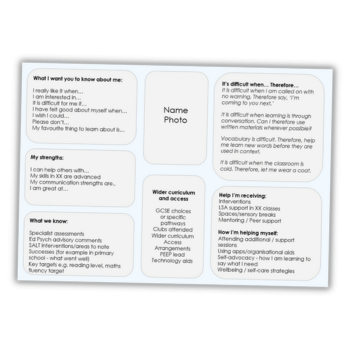Lessons in School Leadership – Picking your Battles and Closing the Circle on Unfinished Jobs

With so many things to oversee as a school leader it's easy to leave things up in the air and lose track of them altogether – make it your mantra to tie up those loose ends

- by Dr Emma Kell

‘Picking battles’ as a leader is an important skill – knowing when to let things go and what to initiate change.
Knowing the danger of too many priorities, none of which succeed because, with the best will in the world, teachers can’t keep all of the balls in the air all of the time.
As a profession, we can be charged with trying to do too much for quite a lot of the time.
Not seeing things through is something many teachers and departments can be accused of. We are brilliant at ideas, but now always so brilliant at seeing them through to the end.
Only in my 12th year in a leadership role can I genuinely put my hand on my heart and say that, if I say I’ll do something, I’ll do it – or if I don’t, I will be back with an explanation as to precisely why it didn’t happen and my reasons for changing direction.
I have a new mantra, which is around ‘closing the circle’ – don’t leave issues hanging, jobs unfinished.
If there’s been a problem with a student and actions have been taken, go back to the teacher and see how things are going a couple of weeks later. If there’s a discussion in a meeting, let the department
John was master of this – he would pick a battle, just one, and, dog-with-bone, would stick with it.
The earliest I remember was on school uniform. Haverstock School didn’t have a uniform when I started. It was a bit of a badge of honour and a manifestation, in the eyes of many teachers, of how we valued individual identity and self-expression. John decided to introduce one.
He knew the staff would be against it – and this was a very vocal staff. (John’s relationship with the unions was one of jovial mutual respect which acknowledged each one’s need to represent their interests.)
He stood up in briefing and announced that we were bringing in a uniform in September. In the stunned silence which followed, he stated: ‘this decision is not up for discussion. But you can choose the colour’. Distraction technique effective, we fell upon the swatches, debating the relative benefits of blue (a bit dull?) over green (the stains!) over purple (compatibility with skin tone)?
I have no doubt that there were still mutters of disgruntlement and people who couldn’t get on board, but that situation was handled with a humour and a humanity that prevented it from becoming the full-scale conflict that it might have done.
When I have to make decisions that are less than popular, I think back to this one all the time.
He then picked up on coats in classrooms. To continue on the uniform theme, for the first decade of my career I declared school uniform (or lack thereof) one of the only issues in life on which I had no strong opinions. What does it matter what students are wearing, as long as they’re engaging in learning?
For many years, I was quite blind to school uniform transgressions – the untucked shirt, the rolled-up skirt, and was picked up for this on a number of occasions, including by John.
He’d picked his battle and he was sticking with it. He would enter classrooms and immediately highlight the offensive items, making students take them off immediately.
He would reiterate his expectations in briefing, making those of us who hadn’t paid attention shrivel with shame and simmer with resentment.
It took ages for the penny to drop – it didn’t drop until several years after I’d left the school: it wasn’t about the coats. It was about consistency and fairness. It was about learning (we and the students) to live within a set of expectations. It was about standards and unity – and it mattered.
It really mattered. It could have easily have been about ties or shirts or belt buckles, but he’d chosen coats. He let us assertively with stubborn determination and with humour, but he saw it through because he knew it was important – and after a few weeks, he had full buy-in.







